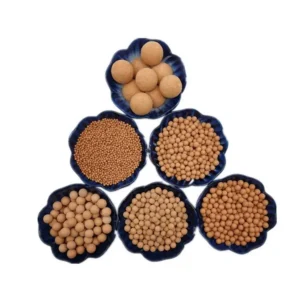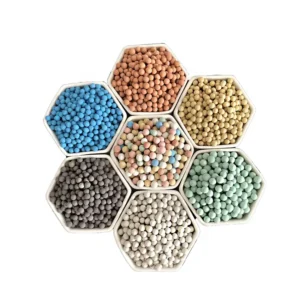Clay balls, also known as lightweight expanded clay aggregate (LECA), have gained popularity in various industries due to their excellent insulation properties. When it comes to insulation, choosing the right size of clay balls is crucial.
Small – sized clay balls, typically with a diameter of 2 – 5mm, are often used in applications where a fine – grained and uniform insulation layer is required. For example, in the insulation of small – scale electronic devices, their small size allows for better filling of narrow spaces, providing effective thermal insulation. They are also suitable for insulating pipes with small diameters. The small clay balls can tightly wrap around the pipes, reducing heat loss. However, they may not be as effective in large – scale insulation projects due to the large amount of labor required for installation.

Medium – sized clay balls, ranging from 5 – 10mm in diameter, are a popular choice for many insulation applications. In building insulation, they can be mixed with other materials to create insulation boards or used as fillings in wall cavities. Their moderate size makes them easy to handle and install. They can also provide good thermal resistance, helping to keep buildings warm in winter and cool in summer. Moreover, in horticulture, medium – sized clay balls are used in hydroponic systems not only for plant support but also for heat insulation in the root zone.
Large – sized clay balls, with a diameter of 10 – 20mm or even larger, are mainly used in large – scale industrial insulation projects. For instance, in the insulation of industrial furnaces and large – scale storage tanks, their large size allows for quick installation and can withstand high temperatures. They have a relatively low thermal conductivity, which means they can effectively prevent heat transfer. In addition, large – sized clay balls can be used in the construction of green roofs. They can retain water while providing insulation, contributing to the energy efficiency of the building.
In recent years, there has been a growing trend towards using clay balls in sustainable construction. Many construction companies are turning to clay balls as a more environmentally friendly alternative to traditional insulation materials. This is because clay is a natural and renewable resource, and the production of clay balls consumes less energy compared to some synthetic insulation materials.

When choosing the size of clay balls for insulation, several factors need to be considered. The application area, the temperature range, and the installation method all play important roles. For example, if the insulation is for a high – temperature industrial environment, large – sized clay balls with high – temperature resistance should be selected. On the other hand, for a small – scale, precision – oriented project, small – sized clay balls might be the better option.
In conclusion, the recommended size of clay balls for insulation purposes depends on the specific requirements of the project. Whether it’s small, medium, or large – sized clay balls, each has its own advantages and is suitable for different insulation scenarios. By understanding the characteristics of different – sized clay balls and considering the project’s needs, one can make an informed decision to achieve the best insulation effect.

